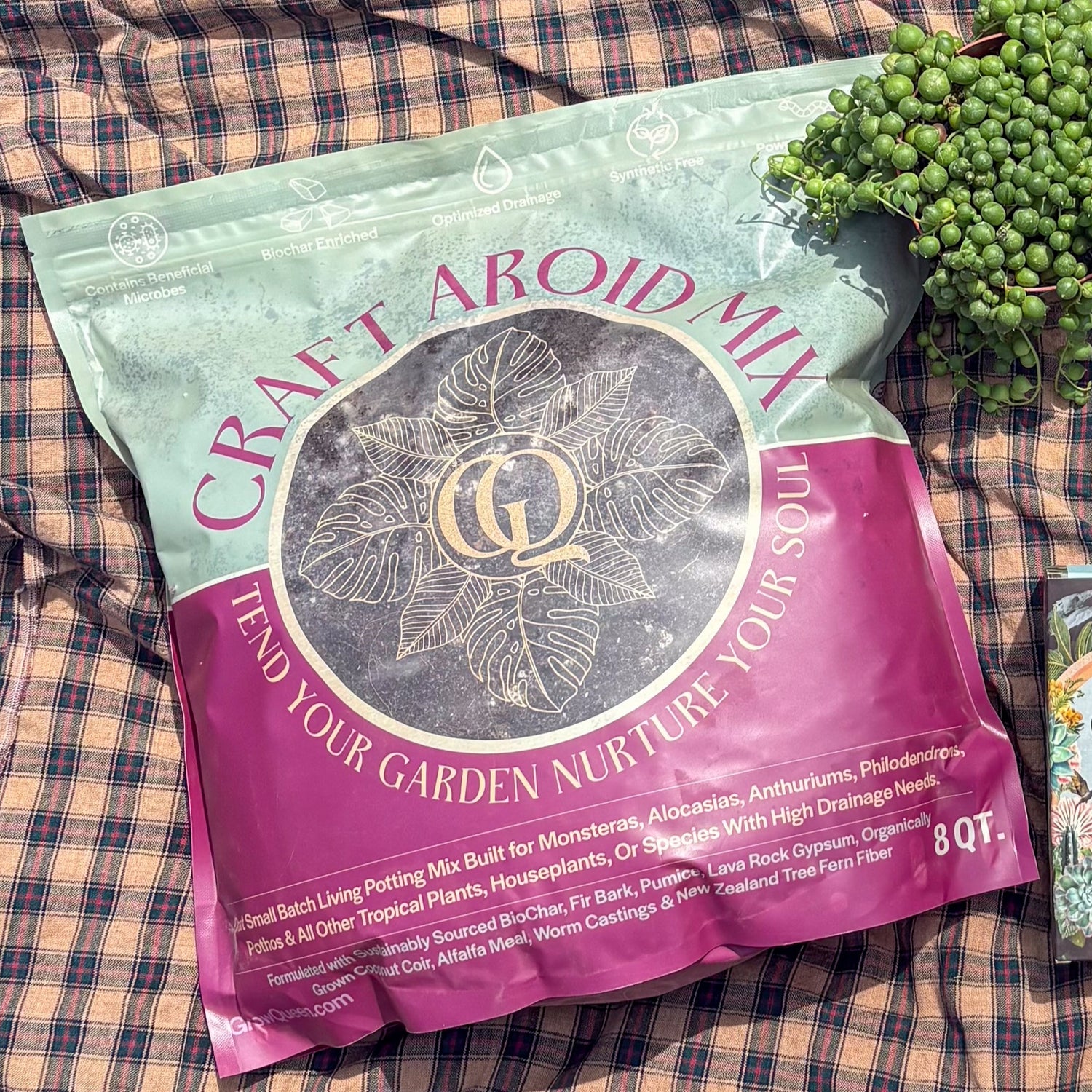We’ve all heard it before:
“Don’t fertilize your plants in winter — they’re resting!”
But here’s the truth — most indoor plants never fully go dormant. Dormancy usually applies to outdoor perennials exposed to freezing temperatures and short daylight cycles. Inside our homes, where it’s warm and light levels are somewhat consistent, your houseplants are still very much alive and active — just in slow motion.
🌿 What’s Really Going On in Winter
Even when leaf growth seems to pause, there’s a quiet but crucial process happening below the surface.
Your plant’s roots remain metabolically active during winter. They continue to absorb oxygen, exchange gases, and uptake water and dissolved minerals. Research in plant physiology shows that root growth can occur at temperatures as low as 50°F (10°C), especially in tropical species like monsteras, philodendrons, and pothos.
This period is when your plants focus on building and repairing root tissues, aided by hormones like auxins and cytokinins that balance new growth with recovery. These strong roots are what allow your plant to bounce back with lush, fast growth once spring light returns.
Think of it like the “off-season” training period for an athlete — not flashy, but essential.
If you completely stop fertilizing during this time, you’re essentially asking your plants to run on an empty tank while they’re still working behind the scenes.
🌿 Root Growth and Hormones in Winter
Even when your plant stops pushing out new leaves, its roots are still alive and active. The plant shifts energy from visible leaf growth to internal maintenance and root repair — like a quiet reset phase.
Two main plant hormones play a huge role here:
1. Auxins
-
These are “growth direction” hormones that tell the plant where to send energy.
-
They’re especially active in root tips, helping roots elongate and branch out.
-
Auxins are also produced in stem and leaf tips — so even if your plant isn’t growing tall, auxins help keep root systems expanding and healthy.
2. Cytokinins
-
These are “cell division” hormones that help new cells form in both roots and shoots.
-
They balance auxins — while auxins push roots to grow down, cytokinins push new shoots and leaves to develop upward.
-
In winter, the ratio of these hormones shifts slightly to favor root and internal repair over leaf production.
🌱 Why It Matters
During winter, your plant is basically focusing on strengthening its foundation — growing fine root hairs, repairing damaged cells, and storing nutrients for spring.
This root activity is crucial because:
-
It improves nutrient uptake efficiency.
-
It helps stabilize the plant for future top growth.
-
It ensures the plant has the energy reserves to bounce back once light levels increase.
So yes — even when your plant seems “asleep,” it’s quietly reorganizing, repairing, and getting stronger under the soil, guided by natural hormonal changes.
💧 Gentle Feeding Is Key
The key isn’t to stop feeding — it’s to adjust the frequency and intensity.
During cooler months, plants photosynthesize more slowly due to reduced light, which means their nutrient uptake rate also slows. That’s why overfertilizing in winter can do more harm than good — excess salts can build up in the soil and damage roots.
Instead, gentle, organic feeding keeps nutrients available at just the right pace. Products like Grow Queen All Purpose Food and Grow Queen Liquid Food release nutrients gradually, supporting healthy cellular function and root metabolism without overwhelming your plants.
These fertilizers provide essential macronutrients (N-P-K) along with trace minerals that are often depleted in potting soils:
-
Nitrogen (N) for chlorophyll production and steady green growth
-
Phosphorus (P) for root and flower development
-
Potassium (K) for stress tolerance and cell wall strength
Even in low light, your plants still use these nutrients to maintain turgor pressure, prevent chlorosis (yellowing leaves), and sustain slow but steady photosynthesis.
🌞 A Few Winter Fertilizing Tips
🗓 Reduce frequency, don’t stop: Feed every 4–6 weeks instead of every 2–3. You’re matching their slower metabolism, not cutting it off entirely.
☀️ Adjust for light: Plants under grow lights or bright south-facing windows still photosynthesize at a higher rate — they’ll need a bit more frequent feeding than those in dim corners.
💧 Water first: Always water your plants before fertilizing to avoid root burn. Damp soil helps nutrients distribute evenly.
🌱 Stay organic: Avoid high-salt synthetic fertilizers, which can accumulate in the soil when water evaporates more slowly in winter. Organic blends like Grow Queen nourish through beneficial microbes, not just minerals.
🧪 Pro Tip: Add a small amount of hydrogen peroxide (1:4 ratio with water) when watering. It adds oxygen to the root zone and discourages anaerobic bacteria that can cause root rot — especially in slower-draining winter soil.
🌿 Final Thoughts
Winter doesn’t mean your plants stop growing — it just means they’re growing differently. The focus shifts from flashy new leaves to strong roots, efficient cells, and internal repair.
By offering gentle, balanced nutrients through the cooler months, you’re supporting their root metabolism, hormonal balance, and nutrient storage, ensuring your plants are ready to burst into vibrant, healthy growth once spring returns.
So this winter, don’t skip the feed — just feed smart.
Your roots (and next season’s leaves) will thank you. 🌱✨



0 comments